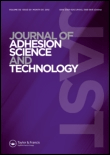
JOURNAL OF ADHESION SCIENCE AND TECHNOLOGY
Scope & Guideline
Elevating Knowledge in the Dynamic World of Adhesion Science.
Introduction
Aims and Scopes
- Adhesion Mechanisms and Interfaces:
Research focusing on the fundamental mechanisms of adhesion at various interfaces, including metal-polymer, polymer-polymer, and ceramic coatings. This includes studies on surface treatment effects, interfacial bonding, and the role of surface roughness. - Material Characterization:
Characterization of materials and their adhesive properties through experimental methods, including mechanical testing, thermal analysis, and microstructural examination. This includes investigations into how different material compositions and structures influence adhesion. - Innovative Adhesive Formulations:
Development and optimization of new adhesive formulations, including bio-based, eco-friendly, and high-performance adhesives. This research often explores the incorporation of nanomaterials and other additives to enhance adhesive properties. - Welding and Bonding Techniques:
Studies on various welding and bonding techniques, particularly friction stir welding, laser welding, and adhesive bonding methods. This includes optimization of welding parameters, joint design, and mechanical performance assessments. - Corrosion and Environmental Effects:
Research examining the effects of environmental factors on adhesion and corrosion resistance of bonded joints, particularly in harsh conditions. This includes the study of corrosion inhibitors and protective coatings. - Applications in Various Industries:
Application-oriented research addressing the use of adhesives and bonding technologies in sectors such as aerospace, automotive, biomedical, and construction. This includes case studies and practical implementations of adhesion technologies.
Trending and Emerging
- Nanotechnology in Adhesives:
There is a growing body of research focused on the incorporation of nanomaterials into adhesive formulations to enhance performance characteristics such as strength, durability, and resistance to environmental factors. - Sustainable and Bio-Based Adhesives:
An increasing emphasis on developing eco-friendly, bio-based adhesives that reduce environmental impact is evident. This includes research on natural polymers and biodegradable adhesives, responding to global sustainability trends. - Advanced Welding Techniques:
Research on innovative welding methods, particularly friction stir welding and laser welding, is gaining traction. Studies focus on optimizing these techniques for improved efficiency and joint quality in various applications. - Interdisciplinary Applications:
Emerging themes highlight interdisciplinary approaches, where adhesion science intersects with fields such as biomedical engineering, energy storage, and nanotechnology, leading to novel applications and innovative solutions. - Smart and Responsive Adhesives:
The development of adhesives that respond to external stimuli (temperature, pH, etc.) is trending, aligning with advancements in smart materials and their potential applications in various industries. - Corrosion Resistance Technologies:
Research into adhesion technologies that enhance corrosion resistance, particularly in the context of protective coatings and treatments for metals, is increasingly relevant in industrial applications.
Declining or Waning
- Traditional Adhesives:
Research on conventional adhesives, such as those based on polyvinyl acetate or standard epoxy formulations, has seen a decline as the field shifts towards more advanced, high-performance, and eco-friendly adhesive systems. - Basic Theoretical Studies:
There has been a noticeable reduction in purely theoretical studies that do not directly correlate with practical applications or technological advancements. The trend is towards applied research that demonstrates clear real-world impact. - Single-Material Studies:
Research focusing exclusively on single-material adhesion without considering the interface or multi-material systems is becoming less common. The emphasis is shifting towards understanding complex interactions in multi-material assemblies. - Limited Focus on Low-Tech Applications:
Topics centered on low-tech adhesive applications, such as basic household adhesives, are less frequently represented in the journal, as the focus moves towards high-tech, specialized applications in industrial contexts.
Similar Journals
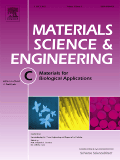
Materials Science & Engineering C-Materials for Biological Applications
Pioneering new frontiers in biomaterials research.Materials Science & Engineering C-Materials for Biological Applications is a premier journal published by ELSEVIER, dedicated to advancing the field of biomaterials through interdisciplinary research. With a robust ISSN of 0928-4931, this journal has made its mark in the realms of Chemical Engineering and Materials Science, achieving impressive Scopus rankings within its categories, namely Rank #16/151 in Bioengineering (89th percentile) and Rank #13/112 in Biomaterials (88th percentile). Although the journal's coverage in Scopus has been discontinued since 2021, it remains a critical resource for researchers, professionals, and students eager to explore innovative materials and their applications in biological contexts. The journal’s open access policy enhances its accessibility, fostering a global exchange of knowledge and inspiring future advancements in the field of materials science.
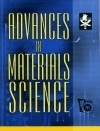
Advances in Materials Science
Pioneering Breakthroughs in Materials ScienceAdvances in Materials Science, published by SCIENDO, is a pivotal journal in the field of materials science that focuses on the latest developments and breakthroughs in the study and application of innovative materials. With a commitment to advancing knowledge across various sub-disciplines, this journal provides a platform for researchers, professionals, and students to share their findings, explore new methodologies, and discuss the implications of materials science on technology and industry. The journal, indexed under the ISSN 2083-4799 and E-ISSN 2083-4799, promotes open dissemination of research, encouraging a collaborative approach to problem-solving across disciplines. Its emphasis on high-quality, peer-reviewed articles positions it as an influential resource within the academic community, driving forward the boundaries of what is possible in materials science. Advances in Materials Science continues to be an essential read for anyone dedicated to understanding and innovating in the materials domain.

JOURNAL OF ADHESIVE DENTISTRY
Advancing Adhesive Innovations for a Healthier SmileThe Journal of Adhesive Dentistry is a premier publication dedicated to advancing the science and practice of adhesive dentistry, published by Quintessence Publishing Co Inc. Known for its rigorous peer-reviewed research, this journal offers an invaluable resource for researchers, dental professionals, and students engaged in the fields of orthodontics, periodontics, and oral surgery. With a significant impact factor and ranked in the top quartile for its respective categories, the journal consistently publishes high-quality articles that influence clinical practices and innovations. Since becoming an Open Access publication in 2022, it has enhanced global accessibility to groundbreaking research, fostering collaboration and knowledge-sharing across diverse dental disciplines. Covering converged years from 1999 to 2024, the journal remains a vital platform for disseminating critical findings that shape the future of adhesive techniques and oral health outcomes.
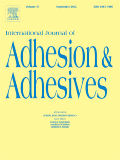
INTERNATIONAL JOURNAL OF ADHESION AND ADHESIVES
Pioneering Research in Adhesive Technologies.INTERNATIONAL JOURNAL OF ADHESION AND ADHESIVES, published by Elsevier Science Ltd, serves as a premier platform for the dissemination of cutting-edge research findings in the field of adhesion and adhesive technologies. Since its inception in 1980, the journal has consistently ranked highly, reflecting its critical role in advancing knowledge across multiple disciplines, including Biomaterials, Chemical Engineering, and Polymers and Plastics. With its impressive positioning as Q1 in Chemical Engineering and Polymers and Q2 in Biomaterials, it operates within the top echelons of its categories, underscoring its importance to academics and industry professionals alike. The journal also boasts significant Scopus rankings, placing it in the top 75th percentile for Chemical Engineering and in the top 74th percentile for Materials Science. Although it does not offer open access, the journal remains accessible to a wide audience through various institutional subscriptions. The scope of the INTERNATIONAL JOURNAL OF ADHESION AND ADHESIVES includes exploring the fundamental principles and applications of adhesion science, materials interactions, and innovative adhesive formulations, making it an invaluable resource for researchers, professionals, and students dedicated to enhancing material performance and engineering solutions.
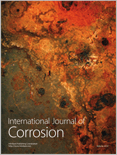
International Journal of Corrosion
Empowering Knowledge Exchange in Corrosion ScienceInternational Journal of Corrosion is a distinguished peer-reviewed journal published by HINDAWI LTD, focusing on the critical field of corrosion research, a vital aspect of materials science and chemical engineering. Since becoming an Open Access journal in 2010, it has provided a platform for disseminating pivotal findings related to corrosion mechanisms, prevention strategies, and innovative materials designed to counteract corrosion, thus directly impacting industries ranging from construction to energy. The journal boasts a respectable impact reflected in its Scopus rankings, holding a Q3 quartile in both Materials Science and Process Chemistry and Technology, with commendable rankings of #157 out of 463 and #37 out of 73, respectively. By fostering knowledge exchange and collaboration among researchers, professionals, and students, the International Journal of Corrosion plays an essential role in advancing the understanding of corrosion phenomena, thereby contributing significantly to the development of more resilient materials and sustainable engineering practices.
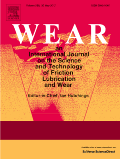
WEAR
Fostering Dialogue in the World of Wear and FrictionWEAR is a premier journal published by Elsevier Science SA, specializing in the field of materials science, particularly in the dynamics of wear and friction at the micro and nanoscale. Since its inception in 1957, this esteemed journal has evolved into a critical resource for researchers, professionals, and students alike, showcasing cutting-edge research and developments that significantly impact the disciplines of Condensed Matter Physics, Mechanics of Materials, Materials Chemistry, and Surfaces and Interfaces. With an impressive impact factor and consistently recognized as a Q1 category journal across various Scopus rankings, WEAR ranks in the top tiers of its field, underscoring its importance and influence within the academic community. The journal serves as a vital platform for disseminating innovative findings and applications, fostering scholarly dialogue, and advancing the understanding of material behaviors under wear and friction processes. For those keen on accessing the latest research in these dynamic areas, WEAR is an indispensable resource, promising a comprehensive collection of high-quality articles that reflect the forefront of scientific inquiry.

MATERIALWISSENSCHAFT UND WERKSTOFFTECHNIK
Empowering Engineers Through Material Insights.MATERIALWISSENSCHAFT UND WERKSTOFFTECHNIK, published by WILEY-V C H VERLAG GMBH, is a prominent journal dedicated to the field of materials science and engineering. With its ISSN 0933-5137 and E-ISSN 1521-4052, this journal serves as a vital resource for researchers and professionals engaged in exploring the intricate relationships between the properties of materials and their applications. Established in 1970 and continuing through 2024, the journal has been consistently recognized in various categories, achieving a Q3 ranking in 2023 across Condensed Matter Physics, Materials Science (miscellaneous), Mechanical Engineering, and Mechanics of Materials. Although it does not offer open access, its high-quality peer-reviewed content is fundamental to the advancement of knowledge within its three key areas: novel material development, material characterization, and application of materials in engineering contexts. As a driving force in the scientific community, MATERIALWISSENSCHAFT UND WERKSTOFFTECHNIK continues to cater to the curiosity of aspiring students, seasoned professionals, and researchers alike, facilitating a deeper understanding of the complexities of material technology.

International Journal of Surface Science and Engineering
Fostering Excellence in Surface and Coating ResearchThe International Journal of Surface Science and Engineering, published by INDERSCIENCE ENTERPRISES LTD, serves as a vital platform for researchers and professionals in the field of mechanical engineering, surfaces, coatings, and materials science. With an ISSN of 1749-785X and an E-ISSN of 1749-7868, this journal disseminates innovative research addressing the challenges and advancements in surface technologies and engineering practices. Its scope includes, but is not limited to, surface coatings, interface properties, and novel material applications. Since its inception in 2007, the journal has established a solid reputation, achieving a Q3 ranking in Mechanical Engineering and Surfaces, Coatings and Films, and a Q4 ranking in Surfaces and Interfaces as of 2023. These metrics underscore the journal's growing influence, despite being positioned within the Q3 and Q4 quartiles of its categories. The International Journal of Surface Science and Engineering provides a curated collection of high-quality articles that contribute significantly to the understanding of surface phenomena, fostering collaboration and advancements in the field. Researchers, professionals, and students alike will find this journal an indispensable resource for cutting-edge developments and in-depth analyses.

JOURNAL OF MATERIALS ENGINEERING AND PERFORMANCE
Pioneering Research in Materials EngineeringJOURNAL OF MATERIALS ENGINEERING AND PERFORMANCE, published by Springer, serves as a vital resource for researchers and professionals in the fields of materials science, mechanical engineering, and mechanics of materials. With an ISSN of 1059-9495 and E-ISSN of 1544-1024, this journal boasts a commendable track record since its inception in 1992 and is set to continue providing valuable insights until 2024. Positioned in the Q2 quartile of its categories, the journal is ranked #246 in Mechanical Engineering and #168 in Mechanics of Materials according to Scopus, reflecting its commitment to high-quality research. While currently not adopting an open access model, it remains accessible to academic professionals and students eager to advance their knowledge in the rapidly evolving domain of materials engineering. The scope encompasses innovative research focused on material performance, engineering applications, and technological advancements, making it an indispensable tool for those at the forefront of the field.

SCIENCE AND TECHNOLOGY OF WELDING AND JOINING
Pioneering Innovations in Joining TechniquesScience and Technology of Welding and Joining, published by SAGE Publications Inc, is a leading academic journal dedicated to advancing knowledge in the fields of condensed matter physics and materials science. With an impressive impact factor that highlights its influence, this journal serves as a premier platform from 1996 to 2024, facilitating innovative research in welding and joining technologies. Situated in the United Kingdom, the journal holds prestigious Q1 rankings in both condensed matter physics and miscellaneous materials science categories, underscoring its commitment to excellence and contribution to the scientific community. As a resource for researchers, professionals, and students alike, it offers insights into the latest developments in the field, ensuring that cutting-edge studies and applications are readily accessible to its audience. Despite not being an open-access journal, its contributions remain invaluable, bridging theoretical advancement with practical implications in welding and materials engineering.